Intro
Discover foods high in fiber, including fruits, vegetables, and whole grains, to boost digestive health and support healthy blood sugar levels with soluble and insoluble fiber rich foods.
The importance of a high-fiber diet cannot be overstated. With the numerous health benefits it provides, from promoting digestive health to reducing the risk of chronic diseases, incorporating foods high in fiber into our daily meals is a simple yet effective way to improve our overall well-being. Fiber plays a crucial role in maintaining a healthy gut, supporting healthy blood sugar levels, and even aiding in weight management. Despite its significance, many of us fail to meet the daily recommended intake of fiber, which can lead to a range of health issues. In this article, we will delve into the world of high-fiber foods, exploring their benefits, types, and ways to incorporate them into our diets.
A diet rich in fiber can have a profound impact on our health, from reducing the risk of heart disease and type 2 diabetes to promoting healthy bowel movements and preventing constipation. High-fiber foods are also often rich in essential nutrients, including vitamins, minerals, and antioxidants, making them a great addition to a balanced diet. Furthermore, fiber can help keep us feeling fuller for longer, making it an effective tool for weight management. With so many delicious and nutritious high-fiber foods to choose from, there's never been a better time to start incorporating them into our meals.
The benefits of a high-fiber diet are numerous, and the best part is that it's easy to get started. By making a few simple changes to our daily meals, we can significantly increase our fiber intake and start experiencing the benefits for ourselves. Whether we're looking to improve our digestive health, boost our energy levels, or simply feel more satisfied after meals, high-fiber foods are the way to go. So, let's take a closer look at some of the best foods high in fiber and explore ways to incorporate them into our diets.
Introduction to High-Fiber Foods
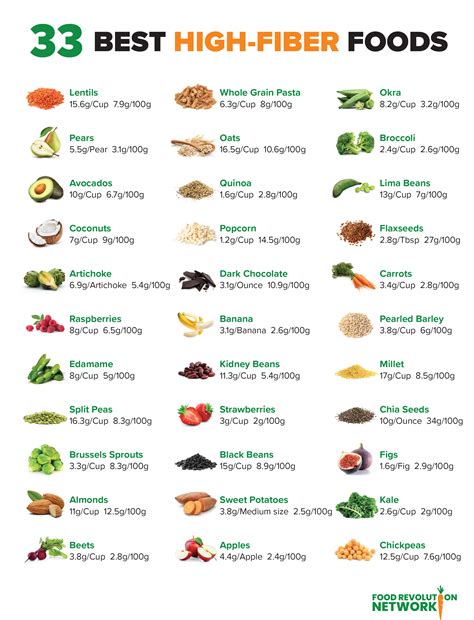
Types of High-Fiber Foods
High-fiber foods can be divided into several categories, including fruits, vegetables, whole grains, and legumes. Each of these categories offers a range of delicious and nutritious options, making it easy to get our daily dose of fiber. Some of the best high-fiber fruits include apples, bananas, and berries, while leafy greens like broccoli, spinach, and kale are rich in fiber and essential nutrients. Whole grains like brown rice, quinoa, and whole wheat bread are also high in fiber, as are legumes like lentils, chickpeas, and black beans.Benefits of High-Fiber Foods
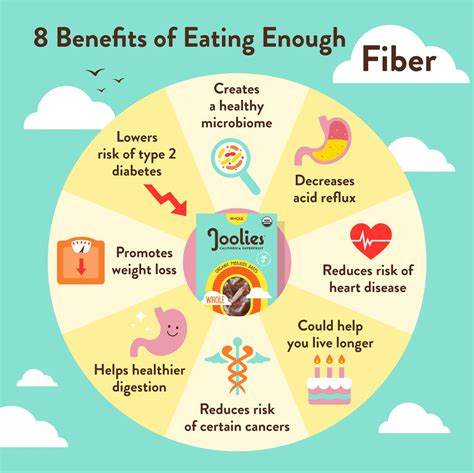
How to Incorporate High-Fiber Foods into Your Diet
Incorporating high-fiber foods into our diets is easier than we think. Here are some simple tips to get us started: * Start our day with a high-fiber breakfast, such as oatmeal with fruit and nuts * Snack on high-fiber fruits and vegetables, like apples and carrots * Incorporate whole grains into our meals, such as brown rice and quinoa * Add legumes to our meals, such as lentils and chickpeas * Drink plenty of water to help fiber move through our digestive systemHigh-Fiber Food Options
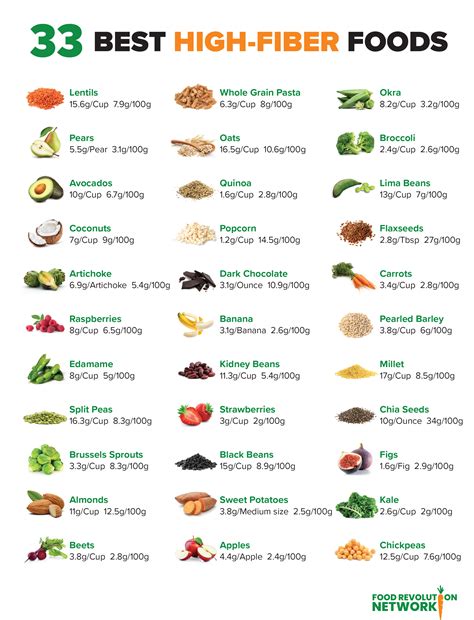
Practical Tips for Increasing Fiber Intake
Here are some practical tips for increasing our fiber intake: * Keep a bowl of high-fiber fruit on our kitchen counter * Add high-fiber nuts and seeds to our oatmeal or yogurt * Incorporate high-fiber vegetables into our meals, such as broccoli and carrots * Try new high-fiber foods, such as quinoa and farro * Drink plenty of water to help fiber move through our digestive systemCommon High-Fiber Foods
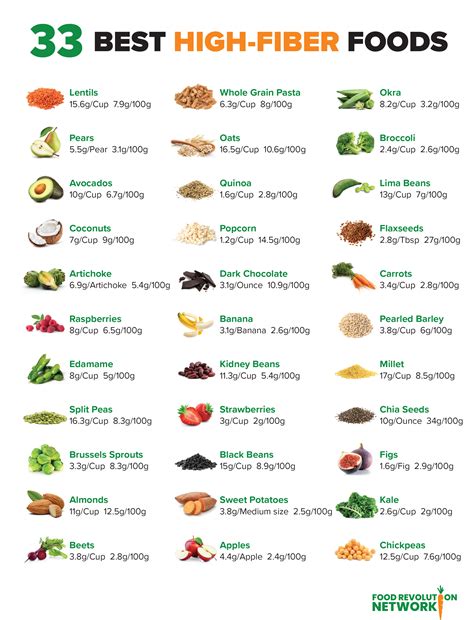
High-Fiber Food Recipes
Here are some delicious and easy-to-make high-fiber food recipes: * High-fiber breakfast bowl: mix together cooked oatmeal, sliced banana, and almond butter * High-fiber salad: mix together cooked quinoa, chopped kale, and sliced avocado * High-fiber soup: mix together cooked lentils, diced vegetables, and whole grain breadImportance of Fiber in Our Diet
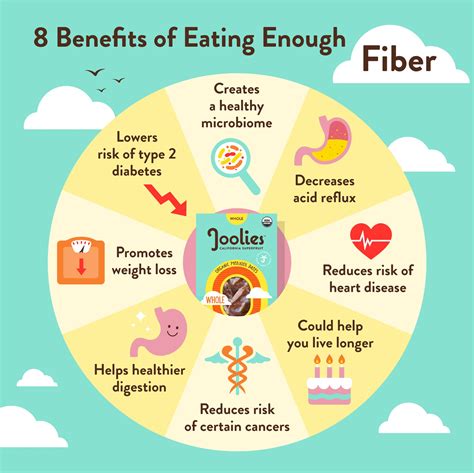
How Much Fiber Do We Need?
The daily recommended intake of fiber varies depending on our age and sex. Generally, adults need to consume at least 25-30 grams of fiber per day. However, many of us fail to meet this recommendation, with the average adult consuming only 15 grams of fiber per day. Increasing our fiber intake can be as simple as making a few changes to our daily meals, such as adding more fruits and vegetables to our diet or incorporating whole grains into our meals.Conclusion and Final Thoughts

What are the benefits of a high-fiber diet?
+A high-fiber diet can help promote digestive health, reduce the risk of chronic diseases, and support healthy weight management.
How much fiber do I need to consume per day?
+The daily recommended intake of fiber varies depending on age and sex, but generally, adults need to consume at least 25-30 grams of fiber per day.
What are some high-fiber food options?
+Some high-fiber food options include avocados, berries, leafy greens, whole grain cereals, and legumes.
How can I incorporate more fiber into my diet?
+You can incorporate more fiber into your diet by adding more fruits and vegetables to your meals, incorporating whole grains into your meals, and adding legumes to your meals.
What are the risks of a low-fiber diet?
+A low-fiber diet can increase the risk of constipation, diverticulitis, heart disease, and type 2 diabetes.
We hope this article has provided you with a comprehensive guide to high-fiber foods and their benefits. Whether you're looking to improve your digestive health, boost your energy levels, or simply feel more satisfied after meals, high-fiber foods are the way to go. So, go ahead and share this article with your friends and family, and let's get started on our journey to a healthier, happier us!
